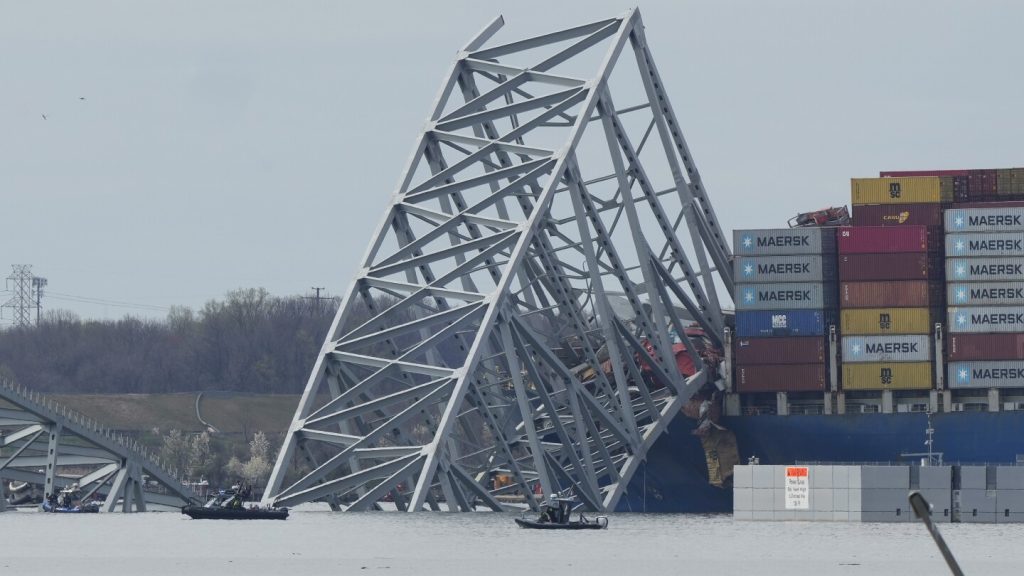A cargo ship collided with Baltimore’s Francis Scott Bridge, causing it to collapse and resulting in the presumed deaths of six people. The Dali cargo ship issued a mayday call indicating loss of power before the crash, but continued towards the bridge at high speed. The impact caused the bridge to break and fall into the water, with six construction workers who were on the bridge at the time still missing. An inspection of the Dali in Chile last June identified propulsion and machinery issues, although a Coast Guard inspection in New York in September did not find any deficiencies.
The ship was moving at a speed of 8 knots, resulting in significant force upon impact with the bridge support. Experts noted that the bridge did not appear to have sufficient protection to withstand the crash. The NTSB announced that they will be investigating the bridge structure to determine the cause of the collapse. The collapse of the bridge is expected to have a significant impact on the region, with potential logistical nightmares and disruptions to shipping and commuter traffic. President Joe Biden plans to visit Baltimore and expects the federal government to cover the cost of rebuilding the bridge.
Two people were rescued, but six others from the construction crew remained missing. The ship is owned by Grace Ocean Private Ltd., and all crew members were accounted for without injuries. The bridge collapse will likely affect the Port of Baltimore, a major shipping hub on the East Coast. Lessons can be learned from this disaster, such as implementing bridge cameras and sensors to track cargo ships and communicate with bridge entrances. The incident is not expected to have a major impact on worldwide trade, but improvements can be made to prevent similar accidents in the future.
Instances of major bridge collapses due to ship or barge collisions have occurred worldwide, with several incidents resulting in significant fatalities. In the United States, there have been 18 such collapses between 1960 and 2015, including the 2002 incident in Webbers Falls, Oklahoma, and the 2001 incident in Port Isabel, Texas. The frequency of these accidents highlights the need for improved safety measures and infrastructure resilience. The NTSB investigation into the Francis Scott Bridge collapse will likely provide valuable insights for preventing future disasters and ensuring the safety of bridge structures across the country.


